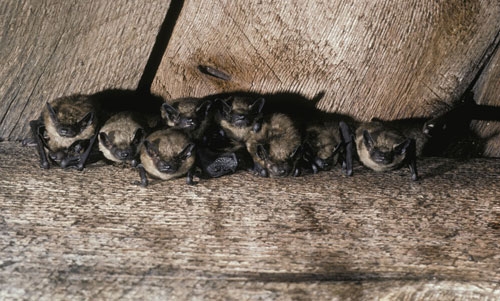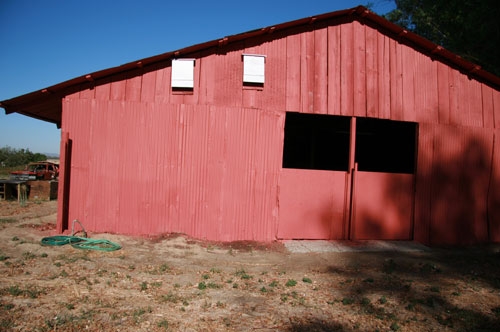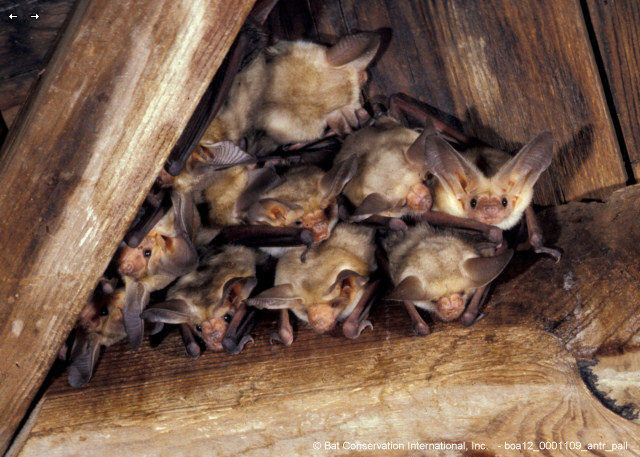
California is home to 25 species of bats. All are insectivorous, with the exception of two species in the Southern California desert that feed on pollen and nectar. Here in the Central Valley there are seven common species of bats including red, hoary, pallid, big brown, and Mexican freetailed bats, as well as California myotis, and Yuma myotis, sometimes referred to as little brown bats.
Farmers welcome bats to their farms every year because they are voracious predators of pests including stinkbugs, cucumber beetles, and moths such as cutworms and armyworms that plague crops. Mosquitoes, midges and flies are also a favorite prey. Studies by UC Cooperative Extension in Yolo County and the UC Davis Department of Wildlife, Fish, & Conservation Biology are looking at the impact of bats on codling moth control in walnuts, a serious exotic pest that costs the walnut industry tens of thousands of dollars every year to control. Current data suggest that orchards with colonies of bats have higher bat activity than those without bats.

Sometimes bats roost where they are not wanted. If this occurs, excluding them from the area is the best way to remove them. However, this should not be done between the end of May and early August when bats have their young. Generally they have one offspring per year, with many weeks before the pups can fly. Insectivorous bats generally live for at least 10 to 15 years. Contact the UC Cooperative Extension Service in Yolo County for more information on excluding bats from buildings. If one is found in your house, simply turn out the lights and open the doors or windows and it will fly right out (they’re as scared as you are!).
Injured and orphaned bats are occasionally found on the ground. Never touch a bat with bare hands as they can carry rabies. If one is found on the ground, use gloves or a dustpan and broom to gently pick it up and put it in an area where predators such as cats or dogs cannot get to it. The bat will usually fly away at some point. If a bat is obviously injured or sick, contact the California bat rescue unit and someone will come get the bat to try to nurse it back to health to release it back in the wild.

Migration is the most dangerous time for bats because they become concentrated as they move, making them more vulnerable to dangers, such as wind turbines. Since little is known about the migratory movement of bats, it is crucial that we develop a better understanding of their seasonal whereabouts so hazards are minimized. Wind turbines especially should not be placed in their migratory pathways.
For those interested in learning more about bats, contact the Yolo Basin Foundation. Every summer they lead tours to watch several hundred thousand bats leaving their roost at dusk under the Sacramento causeway to forage for insects, helping farmers with natural pest control.